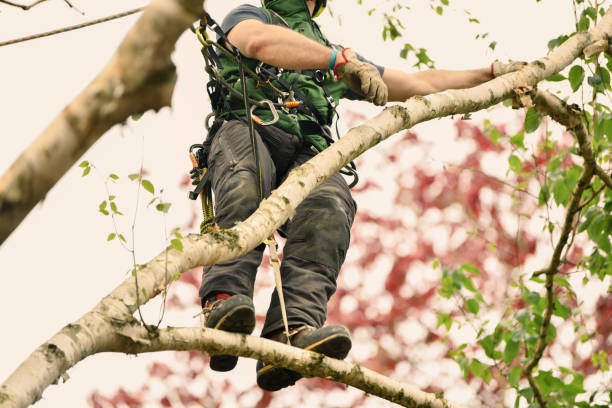Tree trimming is a critical aspect of maintaining the health, safety, and beauty of your landscape. Overgrown or poorly maintained trees can pose risks to property, reduce aesthetic appeal, and even affect the tree’s long-term health.
Regular trimming encourages strong growth, prevents disease, and ensures that your trees remain safe and visually appealing.
Knowing the right timing for tree trimming is essential. Factors such as tree species, growth rate, climate, and location can influence how frequently trees need attention.
By understanding these factors, homeowners can schedule trimming at the optimal intervals, promoting healthy growth while avoiding potential hazards.
Promoting Tree Health
Regular trimming helps maintain the overall health of your trees by removing dead, diseased, or damaged branches. Proper pruning prevents the tree from wasting energy on unhealthy growth and encourages stronger new growth.
- Remove broken or decaying branches to prevent disease spread.
- Prune crowded areas to improve air circulation and sunlight penetration.
- Trim weak or crossing branches that could cause structural problems.
Healthy trees are more resilient to pests, diseases, and environmental stress. Proper trimming encourages vigorous growth and reduces the risk of long-term damage.
Enhancing Safety
Tree trimming is not just about aesthetics, it’s also about protecting your property and family. Removing potentially dangerous branches reduces the risk of accidents and protects people and structures nearby.
- Remove overhanging branches that could fall during storms.
- Trim limbs near power lines to prevent electrical hazards.
- Reduce branches obstructing walkways, driveways, or roads.
Regular maintenance minimizes the risk of accidents caused by falling limbs or unstable trees. Professionals identify potential hazards and address them before they become dangerous.
Improving Appearance and Curb Appeal
Well-trimmed trees significantly enhance the visual appeal of your landscape. Trimming promotes a balanced, neat appearance, making your property look cared for and inviting.
- Shape trees to create a balanced and attractive look.
- Remove unsightly growth or dead branches that detract from aesthetics.
- Maintain the desired size and form of ornamental trees.
Consistent trimming ensures your trees complement your property’s overall design. A neat, well-maintained landscape increases property value and creates a welcoming environment.
Managing Growth Based on Tree Type
The frequency of trimming depends largely on the species and growth rate of your trees. Understanding your tree’s growth patterns ensures it receives the right care at the right time.
- Fast-growing trees may require trimming once or twice a year.
- Slow-growing or mature trees may only need pruning every 2–3 years.
- Flowering or fruit-bearing trees have specific seasonal trimming requirements.
Understanding the needs of each tree type allows homeowners to plan effective maintenance schedules. Proper timing ensures the tree thrives without unnecessary stress or damage.
Seasonal Considerations
Different seasons can impact the best time for tree trimming. Seasonal timing can make a big difference in tree health and recovery after pruning.
- Late winter or early spring is ideal for most trees before new growth begins.
- Avoid heavy pruning during peak summer heat, which can stress the tree.
- Fall trimming should be limited to remove dead or hazardous branches.
Seasonal awareness helps maintain tree health and prevents unintentional damage. Professionals adjust trimming schedules based on local climate and weather patterns for optimal results.
Regular Tree Trimming Protects Your Property and Investment
Tree trimming is a vital practice for maintaining the health, safety, and appearance of your landscape. By scheduling regular pruning based on tree type, growth rate, and seasonal considerations, you ensure that your trees remain strong, attractive, and hazard-free.
Professional tree service companies provide the expertise, equipment, and timing knowledge necessary to maximize the benefits of trimming. Consistent maintenance protects your property, enhances curb appeal, and supports the long-term vitality of your trees.

